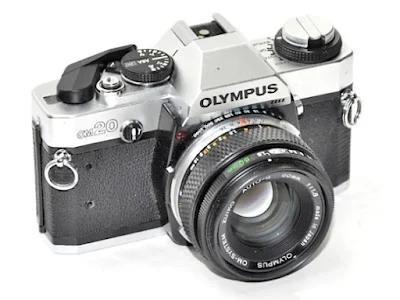The first model, the OM-10, was introduced six years after the professional model OM-1, and three years after the OM-2. All OM models use the same line of Olympus OM lenses, giving them all the Depth of View (DOF) preview functionality, which was standard on most OM Lenses.
The double-digit consumer models featured smaller, fixed viewfinders, had generally slower top shutter speeds, and did not have the same connectivity to off-camera flashes as their seniors.
These cameras were also manufactured with lower-cost components, where the rigors of their moving parts are not rated for as many activations as the professional line. Though well built, the robustness and the solid feel of the single-digit models are just not very apparent with this line.
Olympus OM10 (review + experience)
If you want to support my channel, please do so! https://www.patreon.com/edpavez As always, the drums are by the amazing Rodrigo Recabarren... and if you want to, you can use it for free: http://rodrigorecabarren.com/music-for-videos/ AND NOW, SOME TECHNICAL DETAILS: All my videos are recorded with a Canon EOS M. Nothing fancy.
Olympus OM 10/20/30/40 Series Cameras
- Olympus OM-10, 1978
- Olympus OM-10 QD, 1980
- Olympus OM-10 FC, 1982
- Olympus OM-20 / OM-G, 1983
- Olympus OM-30 / OM-F, 1983
- Olympus OM-40 / OM-PC, 1985
Olympus OM-10, 1978-1987
The first consumer OM series body was launched in 1979. The OM-10 offered aperture-priority automatic exposure and exposure compensation for more complicated lighting situations and for more advanced users. A selection dial sits on the top plate with click selection for Aperture Priority, B, and Manual Adapter, which is an external plug-in adapter that allows for shutter speed control. If the Manual Adapter is not plugged in and the camera switch is set to the Manual Adapter, then the camera shutter speed goes to a fixed 1/60 for flash work.A little-known fact, the focusing screen of the OM-10 is actually interchangeable. It shares the same focusing screen as the OM-1, but the extra protruding tab needs to be cut off, as the OM-10 doesn't have a placeholder for it. Doing it is not as easy as reading about it, actually.
Olympus OM-10 QD, 1980
The OM-10 QD, available only in black, is a special version with a fixed data back ( the equivalent of a Recordata Back 3) to print the time or date on your pictures. The finder screen is now fixed, as well as the back. It can accept the autowinder but not the motor drive.Olympus OM-10 FC, 1982
The OM-10 FC is exclusive to the US, the same model as the original OM-10, but sold in combination with the Manual Adapter 1 (for the OM-10, the Manual Adapter was an option, sold separately). The OM-10 FC was available in chrome and black.Olympus OM-20 (OM-G in the US), 1983-1987
The OM-20 was available in chrome and in black, and it was sold side by side with the OM-10.
Olympus OM-30 (OM-F in the US), 1983-1987
When used on other OM bodies, the lens functions as a semi-automatic focus, with autofocusing triggered with a button on the lens. On the OM-30, the autofocus mode can also be triggered by the shutter release button. Motorized single autofocus or continuous autofocus is possible with the combination of a Winder, or Motor Drive, and the M.In-Focus Trigger Cord. Available in chrome and in a black finish.
Olympus OM-40 (OM-PC in the US), 1985-1987
Other features include an extended ASA range of up to 3200, Program exposure as per the OM-2 SP, and overridable DX-decoding. The OM-40 has a modified, rubberized body, available only in black.


















No comments:
Post a Comment